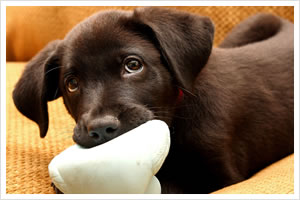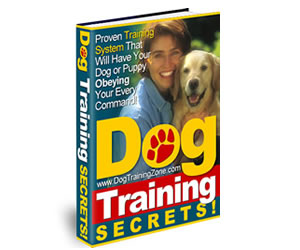Oiliúint Madraí a Tar Nuair An bhfuil sé Glaoite
 Oiliúint madra le teacht nuair a bheidh sé ar a dtugtar is ríthábhachtach, agus d'fhéadfadh a saol a shábháil, chuid d'aon chlár oiliúna madra rathúil. Ní mór do gach madra oilte go cuí a fhoghlaim chun freagra láithreach chuig guth an úinéara, agus an túisce tá an ceacht foghlamtha an níos fearr.
Oiliúint madra le teacht nuair a bheidh sé ar a dtugtar is ríthábhachtach, agus d'fhéadfadh a saol a shábháil, chuid d'aon chlár oiliúna madra rathúil. Ní mór do gach madra oilte go cuí a fhoghlaim chun freagra láithreach chuig guth an úinéara, agus an túisce tá an ceacht foghlamtha an níos fearr.
Is iad na buntáistí a bhaineann le múineadh madra atá le teacht nuair a d'iarr soiléir. Chun starters, coming when called will help you regain control of the dog in case of collar break, snapped leash or other similar equipment failure. This is particularly important when you are out with your dog, especially in an area with lots of traffic. It is vital that the dog respond to your voice and return to your side, even in the absence of collar and leash, and even if there are lots of other things competing for its attention.
Coming when called is also a vital skill for every working dog. Whether the dog’s job is herding sheep, guarding livestock, or sniffing out bombs and drugs at the airport, the working dog must be under total control at all times, whether on leash or off.
Even if your dog’s only job is being a loyal companion, it is still vital that he learn this important basic obedience exercise. After the first obedience lessons, such as heeling, stopping on command, sitting on command, etc. have been learned, it is time to start incorporating the come when called lessons into the daily training sessions.
One note about dog training – it is all too easy for training sessions to become dull and routine for both handler and dog. A bored dog will not be receptive to learning, just as a bored handler will not be a good teacher. It is important, therefore, to always incorporate fun things and play into every training session. Incorporating a few minutes of play time before the lesson begins can do wonders for the attitude of dog and human alike. Likewise, ending each training session with a few minutes of free play time is a great way to end on a positive note and to help the dog associate obedience training with fun and not drudgery.
The command to stay and the command to come when called are often combined in obedience training lessons, and they do go naturally together. Start with the dog on a loose leash, ask the dog to sit and then slowly back away. If the dog begins to get up and follow you, return to the dog and ask him to sit again. Continue this process until you can reach the end of the leash without the dog getting up.
After you can successfully reach the end of the leash on a consistent basis, try dropping the leash altogether. Of course you will want to do this in a controlled environment like a fenced in yard. After the dog has mastered the stay command, it is time to add the come when called command.
Take up the leash again, and with the dog on the end of the leash, say “come” or “come here”. It is often helpful to use a lure when teaching this behavior. The lure provides a visible item for the dog to focus on. Teaching the dog to come to the lure is a good first step in training the dog to come when called.
Repeat this procedure many times until the dog will consistently stay and then come when called. After the dog has mastered coming when called while attached to the leash, slowly start introducing the concept when the leash is removed. As before, Ba cheart go gcuirfí na seisiúin oiliúna ach amháin i rialaithe, timpeallacht shábháilte, nós fál tosaigh nó clós ar ais.
A oilte go maith, Ba chóir madraí obedient freagra a thabhairt ar an glaoch chun filleadh ar a úinéir cuma cén áit a bhfuil sé agus is cuma cén seachráin d'fhéadfadh tarlú. Is gá, dá bhrí thástáil an madra le distractions de do chuid féin.
Má tá tú comharsa, is fearr ceann madra chuid féin, déan iarracht a bhfuil air teacht os cionn leis an madra. An bhfuil sé, agus an madra, seasamh díreach taobh amuigh an fál sa cheantar agus déan an teacht nuair a d'iarr a fheidhmiú le do mhadra amach iall. Má éiríonn sé distracted ag an madra eile, a chur ar an iall ais ar an agus arís ar an bpróiseas. Is é an sprioc go mbeadh do mhadra a íoc go seasta aird a thabhairt ar do chuid orduithe, is cuma cén distractions is féidir iad féin a chur i láthair.





